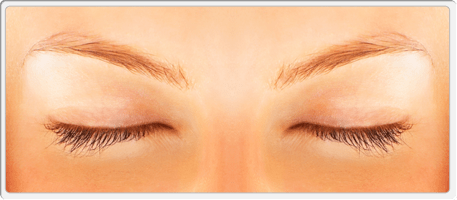Eyelid Surgery (Blepharoplasty)
Eyelid surgery, also known as blepharoplasty, is a surgical procedure designed to improve the appearance of the eyelids. It can be performed on the upper eyelids, lower eyelids, or both. This surgery can address issues such as drooping upper eyelids, excess skin and fat, and bags under the eyes, leading to a more youthful and refreshed appearance.

Types of Eyelid Surgery
- Upper Blepharoplasty: Focuses on the upper eyelids. It removes excess skin and fat that may cause drooping or impair vision.
- Lower Blepharoplasty: Targets the lower eyelids. It addresses bags, puffiness, and wrinkles under the eyes.
- Double Eyelid Surgery: Common in East Asian populations, this procedure creates a crease in the upper eyelid for a more defined look.
Indications for Eyelid Surgery
- Sagging or drooping upper eyelids
- Excess skin on the upper eyelids that impairs vision
- Bags and puffiness under the eyes
- Excess skin and fine wrinkles of the lower eyelids
- A desire for a more youthful and rested appearance
Consultation and Preparation
- Initial Consultation:
- Discuss your goals and expectations with a qualified plastic surgeon.
- Review your medical history, including any previous surgeries and current medications.
- Undergo a physical examination, including measurements of your eyelids and a vision test if necessary.
- Preparation:
- Stop smoking at least several weeks before surgery to promote better healing.
- Avoid taking aspirin, anti-inflammatory drugs, and herbal supplements that can increase bleeding.
- Arrange for someone to drive you home after surgery and stay with you for the first night.
About Eyelid Surgery
Blepharoplasty Surgery
- Anesthesia: Local anesthesia with sedation or general anesthesia will be administered.
- Incisions:
- For upper eyelid surgery, incisions are made within the natural crease of the eyelid.
- For lower eyelid surgery, incisions can be made just below the lower lash line or inside the lower eyelid (transconjunctival incision).
- Removing/Redistributing Fat and Skin:
- Excess skin, muscle, and sometimes fat are removed or repositioned.
- Fat may be redistributed to eliminate puffiness or bulges.
- Closing the Incisions: Incisions are typically closed with sutures, skin adhesives, or surgical tape.
- Recovery and Care:
- Follow your surgeon’s post-operative care instructions.
- Apply prescribed ointments and cold compresses to reduce swelling and bruising.
- Keep your head elevated and avoid strenuous activities for several days.
- Attend follow-up appointments to monitor healing.
Risks and Complications
- Swelling and bruising
- Infection and bleeding
- Dry eyes or difficulty closing your eyes
- Scarring and asymmetry
- Temporary blurred or double vision
- Rarely, more severe complications such as ectropion (outward rolling of the lower eyelid)
Recovery Process
- First Week:
- Expect swelling and bruising, which can be managed with cold compresses.
- Stitches are usually removed after 5-7 days.
- 2-4 Weeks:
- Gradual reduction in swelling and bruising.
- Resume normal activities and light exercise.
- 1-2 Months:
- Full results become more apparent as residual swelling subsides.
- Continue protecting the eyes from sun exposure with sunglasses and sunscreen.
Results and Longevity
- Results are typically long-lasting, but the natural aging process continues.
- Maintaining a healthy lifestyle and protecting your skin from the sun can help prolong the results.
The Eyelid Surgery Procedure
Blepharoplasty Surgery
Conclusion
Eyelid surgery can significantly improve the appearance of the eyes and overall facial aesthetics. By understanding the procedure, preparation, recovery, and potential risks, you can make an informed decision and achieve the desired results. Always consult with a qualified plastic surgeon to discuss your goals and develop a personalized treatment plan.
